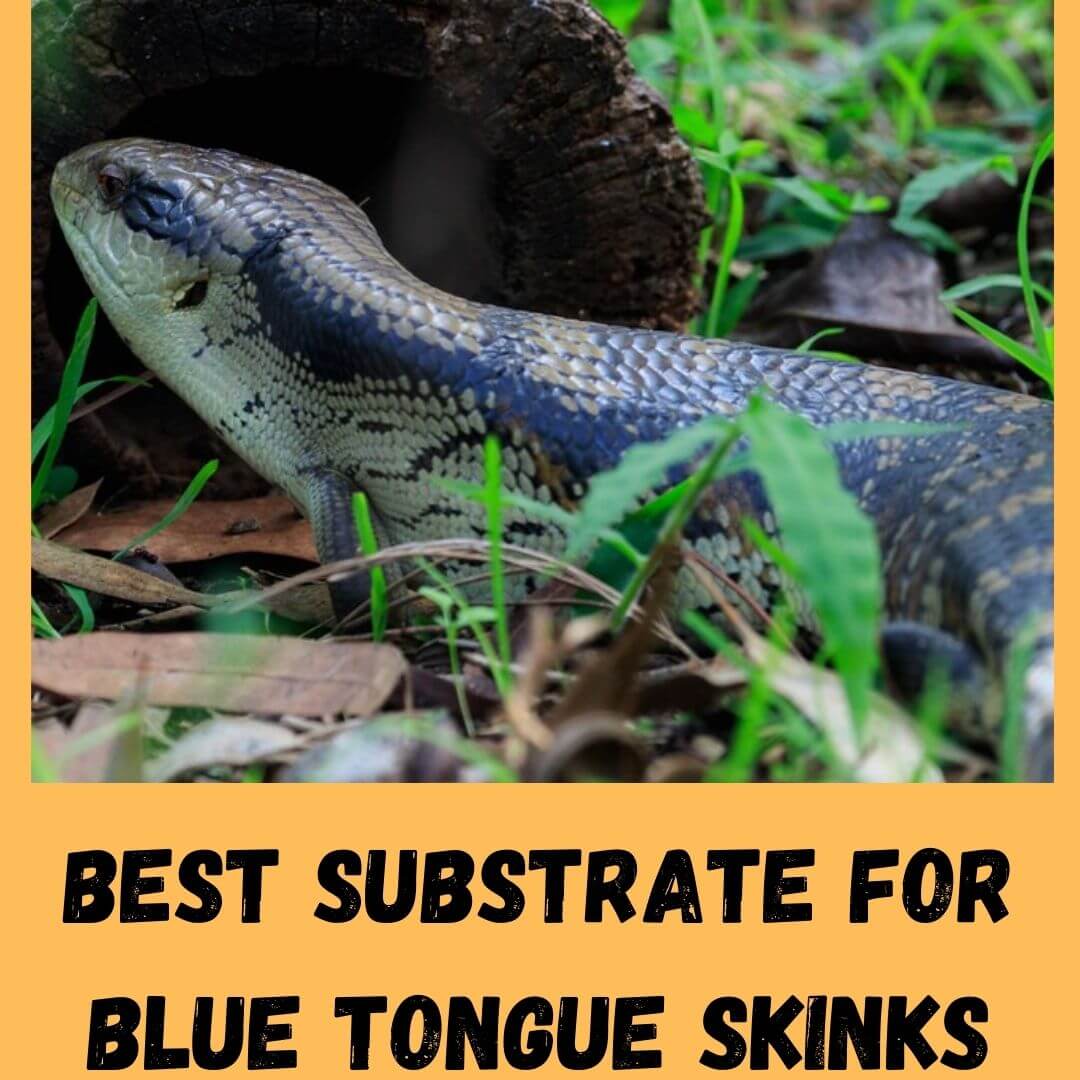If you have already made up your mind to bring a new Blue Tongue Skink into your home, but you are still confused about which substrate to use, then don’t be so. I get your frustration over deciding & choosing the best substrate for blue tongue skinks. Being a first-time lizard owner can also be overwhelming. In this article, I will tell you what are the best substrates for blue tongue skinks.
I’ve talked about the substrate requirement according to different subspecies of blue tongue skink. Choosing the best substrate in a market full of varieties can be daunting and overwhelming. Just because of this reason, I came up with a list of the substrates that you can use for blue tongue skink. Let’s first quickly know what the best substrates for blue tongue skinks are.
Post Contents
- What Is The Best Substrate For Blue Tongue Skinks?
- Best Substrate For Blue Tongue Skinks
- Inadequate Substrate For Blue Tongue Skinks
- What Substrate To Use For Blue Tongue Skink
- FAQ
- Do Blue Tongue Skinks Need Substrates?
- How Deep Should Blue Tongue Skink Substrate Be?
- Is Forest Floor Good For Blue Tongue Skink?
- Best Substrate For Northern Blue Tongue Skinks
- Best Substrate For Indonesian Blue Tongue Skinks
- Final Thoughts
What Is The Best Substrate For Blue Tongue Skinks?
Cypress Mulch, Leaf Litter, Coco Fiber, Aspen Wood Bedding, & Paper towels are the best substrates for blue tongue skinks. Online, you can find reptile prime coconut fiber as the best substrate for its easy to clean, non-toxic, absorbent, and naturally encouraging burrowing qualities.
There are many other substrates in the market full of different types and qualities; it can be confusing to select the most suitable one. Let’s learn in detail if you want to invest in a substrate or not. Here, further, we will discuss the best substrates for blue tongue skink and its subspecies in more detail.
Best Substrate For Blue Tongue Skinks
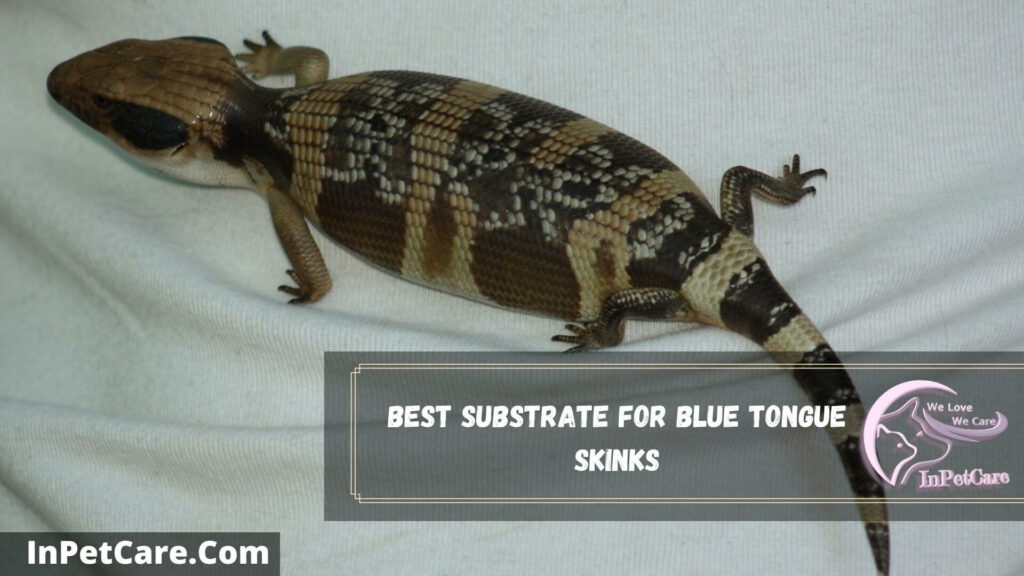
Here are the best substrate for blue tongue skinks and how they are helpful.
Paper Towels
Paper towels might not look appealing, but it is cheap and readily available. You can easily change it as well. It is always considered one of the best substrate types for juvenile blue tongue skink. If you are planning to clean their feces, paper covers help greatly. It is also best for quarantining young blue tongue skinks. It not only helps in removing your skin’s feces, but you can also use it if your skink is suffering from parasites or illness.
Aspenwood Bedding.
Believe it or not but I recently learned that aspen wood bedding makes the best choice for any blue tongue skink species. Aspenwood bedding tends to be very lightweight and easy to place or remove. It also helps in absorbing the smell and the waste, making it perfect for the skink. It also encourages burrowing. If you want to keep your blue tongue skink in a naturalistic-looking enclosure, consider adding aspen wood bedding.
However, it would help if you made sure of the comfort level of your skin. When choosing an aspen wood bedding, consider getting hypoallergenic and filtered considerable savings or chips. Avoid getting aspen wood dust or small pieces as your skink is likely to be ingested and choke them.
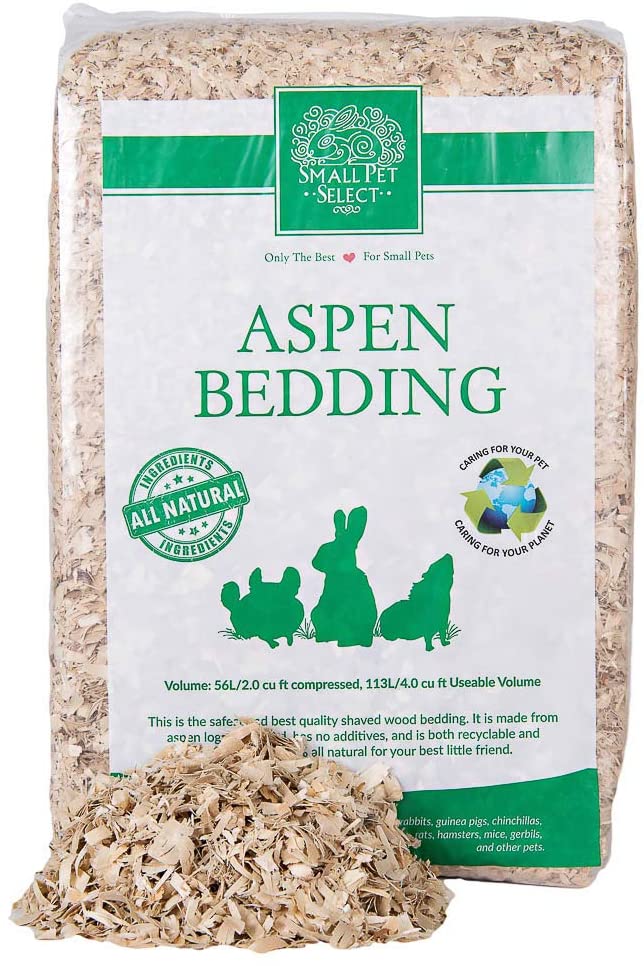
Cypress Mulch
The blue tongue skink species who need lower humidity levels also need substrate like Cypress mulch. Cyprus mulch-like substrate will always keep their bedding dry.
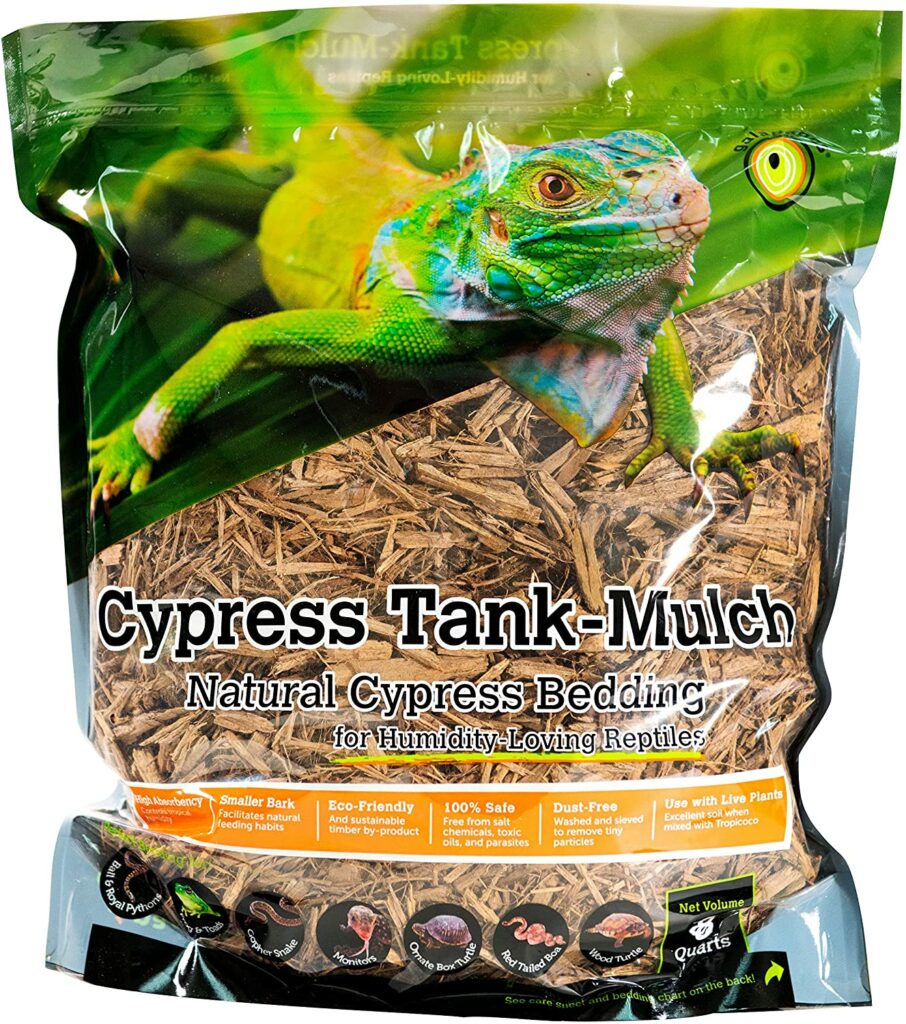
Coco fiber
I have recently learned that Coco fiber works great for blue tongue skink requiring higher humidity. Although they are great for lizards that need higher humidity, Coco fiber can promote microorganisms’ growth. Another concern of having a Coco fiber substrate is that a blue tongue skink can ingest it. However, you can always use Coco fiber to create a bioactive setup.
Reptile Prime Coconut Fiber Substrate
It is one of those perfect substrates that you might be looking for. It is 100% organic but expensive. It is excellent for all blue tongue skinks and their subspecies. It is recommended to mix this prime coconut fiber substrate with Cypress mulch or topsoil.
The most significant benefit of having this substrate is its ability to retain humidity. It is odorless, easy to clean, absorbent, and 100% organic. It also smells great and is dust-free. The most significant advantages of having reptile coconut fiber are the following.
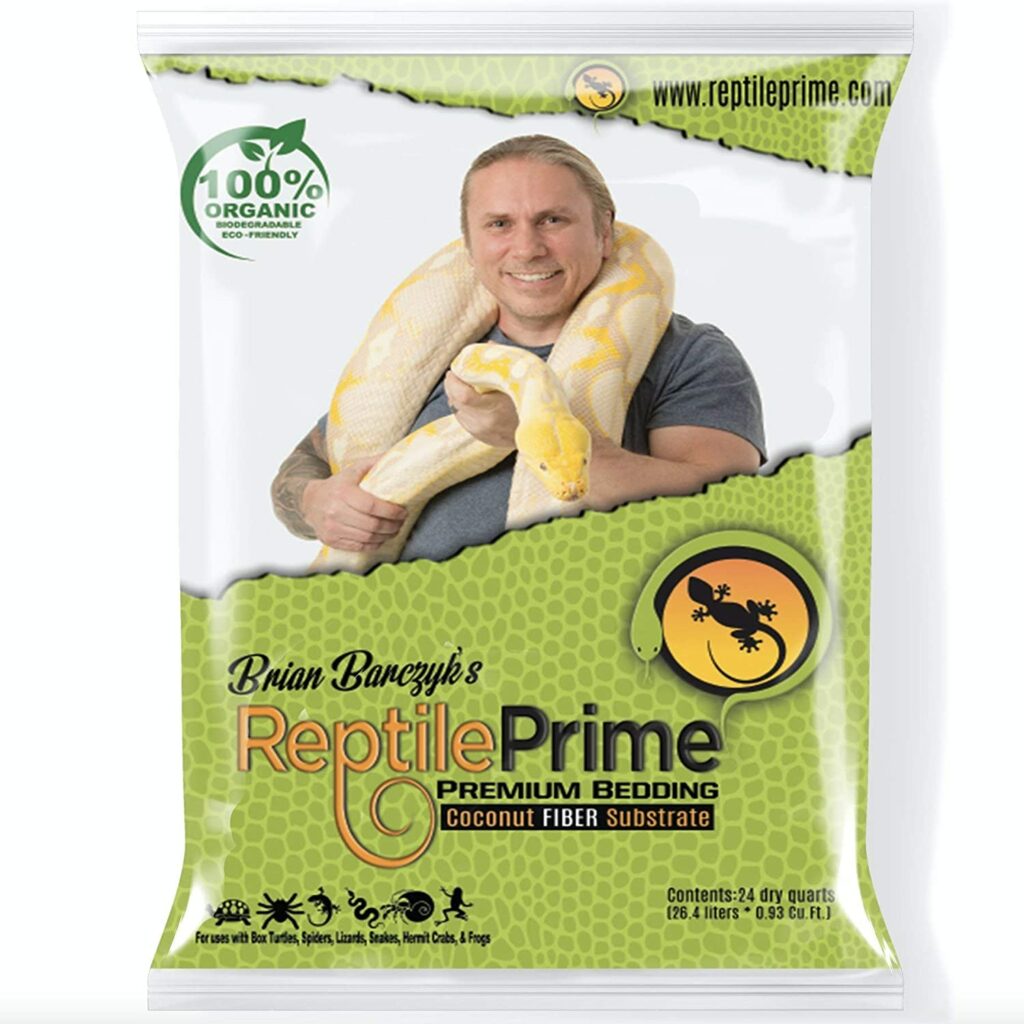
- Is eco-friendly.
- Best for all blue tanks, Skinks, and its subspecies.
- Comes in a recyclable and reusable bag.
- Gives your lizard a natural feel.
- Effectively absorbs water and waste.
- Excellent in reducing foul odor & smells great.
- Dust-free and can even use to plant flowers.
Inadequate Substrate For Blue Tongue Skinks
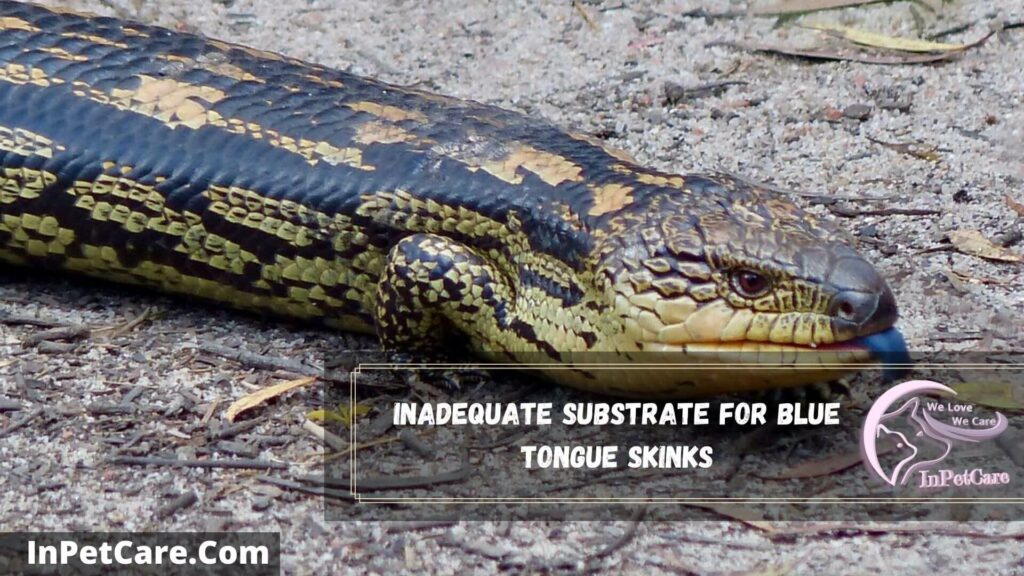
Inadequate Substrate For Blue Tongue Skink | Why Avoid |
| Walnut Shells | Blue Tongue Skinks Can Inhale/Ingest This Material While Eating Or Searching For Insects. |
| Sawdust | If Skink Inhales, It Can Cause Respiratory Issues. Plus, It is Dusty. |
| The Bark Of The Orchid | Impaction Risks & Injury Risk |
| Soil From The Outside | Outdoor Soil Carries Many Microorganisms & Bacterias, If Skink Ingest, It Can Be Fatal |
| Massive/Large Rocks | When Skink Trying To Swallow Small & Large Rocks, It Can Choke or Cause Injury. |
| Sand | Sand Tends To Be Very Fine, Easy To Ingest. It Is Extremely Likely To Cause Impaction |
| Conifer Wood Shavings | Cedar, Fir, Pines Etc. Are Toxic And Can Cause Respiratory Problems |
What Substrate To Use For Blue Tongue Skink
Here, we’ll discuss what substrate you can use for blue tongue skink according to its subspecies.
| Blue Tongue Skinks Species | Suitable Substrates |
| Indonesian Blue Tongue Skinks | Coconut Fibre Mixed With Peat Moss & Some Cypress Mulch |
| Eastern Blue Tongue Skinks | Sugar Cane Mulch |
| Kei Island Blue Tongue Skinks | Cypress Mulch Mixed With Sphagnum Moss |
| Shingleback Blue Tongue Skinks | Sugar Cane Mulch |
| Tanimbar Blue Tongue Skinks | Cypress Mulch Mixed With Topsoil |
| Northern Blue Tongue Skinks | Aspen Wood Shavings Or Chips With No Additives |
| Western Blue Tongue Skinks | Recycled Paper Bedding |
| Irian Jaya Blue Tongue Skinks | Coco Fiber Mixed With Peat Moss |
| Centralian Blue Tongue Skinks | Sugar Cane Mulch |
| Halmahera Blue Tongue Skinks | Leaf Litter Mixed With Topsoil & Coco Fiber |
| Blotched Blue Tongue Skinks | Cypress Mulch With No Additives |
| Merauke Blue Tongue Skinks | Leaf Litter Mixed With Topsoil & Sphagnum Moss |
FAQ
- How To Breed Blue Tongue Skinks?
- All You Need To Know About What Can Blue Tongue Skinks Eat?
- Does Petsmart or Petco Sell Blue Tongue Skinks?
Do Blue Tongue Skinks Need Substrates?
Yes. Blue Tongue Skinks need substrate to thrive, be happy and feel at home, but substrate should not lose particle-based. I would highly recommend you only use non-particle substrate in your blue tongue skink tank.
Loose particle substrates such as alfalfa pellets, crushed walnut shells, play sand, calcium sand, and millet are potential health risks to your blue tongue skink. At the same time, non-particle substrates like newspaper, reptile carpet, ceramic tile, leaf litters, paper towels, and rubber shelf liners are all-around safer option
How Deep Should Blue Tongue Skink Substrate Be?
It is always recommended to pack the substrate 4-6 inches deep in your blue tongue skink tank for best results. It should be composed of natural materials and easy to dig. Although the substrate needs to be loose and easy to dig, it should not pose an impaction risk or issue if ingested.
Is Forest Floor Good For Blue Tongue Skink?
Yes, the forest floor is suitable for blue tongue skink species that need lower humidity levels. It is also ideal for other species with high humidity level requirements, but the moisture and temperature levels need to be monitored by the owners. Overall, the forest floor doesn’t interfere with the humidity and temperature gradient inside the enclosure.
Best Substrate For Northern Blue Tongue Skinks
Recycled paper, sugar cane mulch, Cypress mulch, aspen wood chips, aspen wood shavings, and paper towels are considered the best substrate for Northern blue tongue skink. Northern blue tongue skinks need lower humidity, and these substrates provide everything by keeping it constant. Eco Earth substrate is another alternative.
Best Substrate For Indonesian Blue Tongue Skinks
As Indonesian blue tongue skink need high humidity level, substrate like coco fiber mixed with peat moss and some Cypress mulch, Cypress mulch mixed with coco fiber, topsoil mixed with Cypress mulch, Coco chips, leaf litter mixed with topsoil, and Sphagnum moss are best. Sphagnum Moss mixed with topsoil & leaf debris are another best substrate for Indonesian blue tongue skink.
Final Thoughts
I hope I have managed to give you all the information needed on the best substrate for the blue tongue skink. If you have any other concerns regarding the substrate, please let me know in the comment section. Share this guide with the others to help them find a suitable substrate according to their skink subspecies. If you liked our article, then please share it with the audience to appreciate us.
Make sure to check out our comprehensive guide on how to care for blue tongue skinks. Let’s meet on another article as well till then, take care and goodbye.

94% of pet owners say their animal pal makes them smile more than once a day. In 2007, I realized that I was made for saving Animals. My father is a Vet, and I think every pet deserves one. I started this blog, “InPetCare”, in 2019 with my father to enlighten a wider audience.
